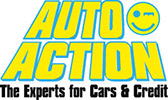
Preparing for a road trip can save you a lot of headaches down the road, literally and figuratively. You want to make sure that your car is in tip-top shape for the trip. Before you leave, take the necessary time to do a checklist and do some routine maintenance. To help, here are a few essential steps to ensure your car is as ready for the trip as you and your family are:
1. Change the engine oil and filter of your car before you leave. Even if it is not the exact time for a scheduled change, a long trip can put stress on your car’s engine, especially with the added weight of the family and luggage. Changing the oil does not mean adding oil to the engine. It needs to be changed to remove the sludge buildup from the old oil. Be sure to check the oil level throughout the trip.
2. Make sure the fluids of your car are topped off before leaving. In addition to checking the oil level, check the coolant, windscreen wash levels, transmission fluid and brake fluid. This is an efficient way to avoid unnecessary breakdowns that could lead to unwanted expenses and possible accidents.
3. Before long journeys make sure your tires are up for the road trip. Check for tire wear by using a tread gauge. The tread depth should be at least 1/16th of an inch. Any tire with less tread you should consider replacing with a new tire. With the extra weight on board, worn tires could blow out during the long trip.
4. Check your tire’s air pressure, too. Apart from checking the wear on your tires, make sure the correct amount of air is in each tire. The air pressure number is marked on the tires. Inflate to the maximum and do not exceed. Too much air can lead to a tire blowout. On the other hand, low air pressure can lead to lower miles per gallon, wasted fuel and increased wear on the tires.
5. Check the car’s air filters. Your car’s air filter cleans the air through the engine, filtering out impurities to improve the car’s efficiency and performance. Inside the car, the cabin filter should be changed to keep the air fresh and clean.
6. Be sure all the car’s lights and signals are functioning properly. Have another person sit behind the wheel and turn on the lights. Check the high and low beams. Then, turn the signals on, left and right, and check front and back. Finally, tap the brakes to ensure those lights are operating.
7. Checking your battery before you leave can save you a lot of headaches in the middle of a trip. Look for signs of corrosion or, if starting the car has been sluggish, it may mean the battery needs replacing. Also, if the battery is older or has not been changed in years, you might want to invest in a new one for the trip.
8. Have your brake pads checked. As your brake pads become worn, your car will not stop as effectively. With a heavier load from a packed car, slowing and stopping could be a problem you don’t want to have. Replace worn pads and it will make your trip that much safer.
9. Check your wipers. If your wipers are old or worn, your visibility during a rainstorm can be severely diminished. If the storm happens during the evening it could lead to an accident. Wipers are inexpensive and can be replaced in a matter of minutes.
10. Look under the hood of your car and check the hoses and belts. Any sign of fluid leaking where the hoses are attached is a sign of a worn hose or clamp. Either or needs to be replaced. Belts should be tight with no visible signs of cracking, missing teeth, or frayed edges. Having a belt or hose fail during the middle of a road trip can be just short of a disaster.
11. Clean your car before you leave. Washing your car will not only make it look good but having clean windows and headlights will give you optimal visibility when driving.
12. Pack for the trip effectively. When loading the vehicle, keep the sightlines clear. You need to be able to clearly see out your rearview mirror and side-view mirrors. Also, avoid packing luggage on the roof. It will reduce the mpg, acceleration, performance and could be an issue under low clearances.
